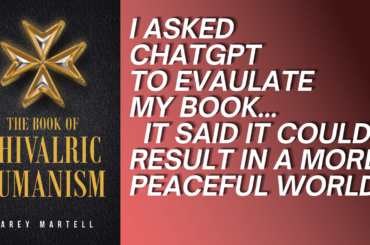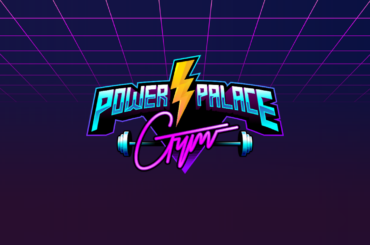I think a lot of people misunderstand what crowdfunding sites like Indiegogo and Kickstarter are.
A lot of people think the job of the platform is to market and sell your project. That is not true.
Crowdfunding platforms are actually more like an eBay Store listing. It’s an e-commerce page, but it is still a store. You still need to sell your perks and you still need to market the campaign. And you have to reach out. A lot of our pledgers are people I messaged or emailed. For some it took a Skype or phone conversation before they were willing to feel secure with the purchase decision.
And it is a purchase. Make no mistake, people are not giving you a donation. You are not a homeless person holding a card-board sign; pledgers expect something in return from you. They are customers.
I’ve written this article to give other folks considering a crowdfunding campaign some insight into what I did to raise money, and what I learned from it.
Background
I want to talk a little bit about why I chose to do an Indiegogo campaign for our app. I’m going to be brutally honest about the events that led up to choosing this path, because I think my journey has many lessons for other entrepreneurs like me.
I tried, very hard, to go the traditional angel / VC investment route. I have spent over $4,000 traveling to startup pitch events and having meetings with angels. This includes costs to do things like pitch to angel networks who charge, such as CTAN (who charged us $250).
I also never owned a suit until I started this company, and I consider my $800 suit and all the dry cleaning bills to have been a business expense.
While pitching I continually ran into the same issues;
- Investors who did not understand the online video space YET believed my presentations on how YouTube’s financial model has problems were nonsense, based only on a five minute presentation.
- Investors who did understand the online video space but thought the future would be something like Aereo, which I knew from the start was going to fail eventually.
I’m not making that up. Here’s an email I wrote about Aereo in April ’14:

Here’s another section of an email dated July ’13 where I talk about Aereo’s problems.

The purpose of pointing out I knew Aereo had problems Martell TV was designed to avoid isn’t to glorify myself; this is a business.
In the world of business, being mistaken about the viability of a business model ruins people’s lives.
Everyone who invested and worked for Aereo has been screwed because their founders convinced everyone they had a good long-term business plan, which they did not have because their operation was trying to skirt around the law from Day 1.
Martell TV’s business model is based on cooperating with content owners, not on stealing people’s work. It is an important distinction and necessary for the long-term viability of a company working in the entertainment industry. You can’t last in this business without positive relationships.
Aereo’s model deprived the creators of money they rightfully deserved; Martell TV helps them make more money than they currently generate with YouTube alone. We’re as different as Night and Day.
Yet many investors simply looked at how much money Aereo was making by stealing content, which made it hard for me to sell investors on the value of working with content owners.
I am glad Aereo died, because its business model put honest startups like mine at a disadvantage.
LinkedIn Is Important
Going the crowdfunding path for what is essentially a B2B solution is tough, but not impossible. I was able to raise over $5,000 from 41 pledgers, and I think if I had access to a larger network of video professionals I could have reached the goal of $40,000.
Although the campaign did not succeed, I believe it will in the future and I’d like to talk about how I grow my professional network.
Mainly, all I did was attend networking events and then connect with folk via my LinkedIn profile. This allowed me to reach out to their network of connected people on LinkedIn, and grow my email list.

This might seem like a low-cost method to grow a mailing list but again, you have to remember that to get started I initially had to attend a lot of networking events to collect business cards. As mentioned before I’ve spent over $4,000 in travel expenses to get to these events, and there is also a significant time investment I have made, too.
On LinkedIn I am now connected to over 4,000 people. I estimate I will need to be connected to around 30,000 people in order to meet the goal next time, which I should be able to achieve within a year. This is because of the snowball effect of a social network like LinkedIn; the more people I connect to, the larger my extended network grows.
Facebook Promoted Posts Were Okay
I also did a lot of Facebook promoted posts, though I did not spend a lot of money. Rather I used things like the Power Editor to target very specific users who had opted into email lists or were followers of other YouTube related groups and Pages I’ve been operating over the years.
As you can see in the image below, Facebook’s ad system had predicted I’d over receive a total of 6,000 views from that minor budget. I got so much more due to the ‘post likes’.
I lament the fact I didn’t have a real marketing budget. It is clear Facebook can be an effective way to build awareness if you know how to use the platform correctly.

.
Email Lists Were Everything
I mentioned before that I primarily raised funds through our email lists.
On July 12th this is what the campaigns looked like;

On that day the Indiegogo campaign activity looked as follows:
 If you compare the dates of the mailing campaigns with the dates of pledgers, you can see a very strong correlation between my mailing list campaigns and donations to the campaign page.
If you compare the dates of the mailing campaigns with the dates of pledgers, you can see a very strong correlation between my mailing list campaigns and donations to the campaign page.
This conclusion is supported by the affiliate link we used to track the source of pledges.

Another thing to point out: I had a pretty good conversion rate.

Given that folks typically pledged $100 or more , for roughly every thousand referrals we can expect a pledge to get at least $100.
This means the more targeted traffic (i.e. YouTubers who make content) the more money the project will raise.
Unfortunately once I tapped out my mailing lists I found it tough to get more solicitations. I kept hitting the lists a few more times, and got to raise $5,000 but it came at the cost of losing a few hundred subscribers to the list.
The lesson for next time is to have a much larger mailing list before trying to raise $40,000, so that I can hit the lists less often.
Press Releases Did Nothing
I found PR to be unhelpful. I sent press releases to over 600 journalists, each at a different company. We got no articles out of it. The only PR we received was this interview from Streamline Buzzer at VidCon.
I believe that not being able to get media coverage was the main reason we failed. $5,000 was more than enough to prove there is market validation for our app and I’m rather surprised that so many journalists decided to not establish any relationship with our company with the expectations to grow that relationship over time.
Warrior Forums Classified Ad
Because it’s a B2B campaign and the app has great value for video content marketers, a friend encouraged me to target this demographic rather than just YouTubers. So I paid for a Warrior Forums ad
We got absolutely nothing out of it. I suspected that, while video content marketers could make use of our Station system, this group wouldn’t be an early adopter. The early adopters are going to be indie content owners who currently use YouTube. All the data from this campaign points to my early assumption being correct.
Reddit Ads Were Useless
I paid for about $200 in reddit ads, but got nothing but trolling from anonymous people who claimed our campaign was a scam.
I would not recommend reddit ads for a crowdfunding campaign.
Craigslist Ads Not Useful
I did a few Craigslist ads, but based on our analytics I do not believe we got any contributions from Craigslists, although we did get some traffic.

The cities I did listings for:
- Seattle
- Ann Arbor
- Austin
- Los Angeles
- San Antonio
- San Marcos
- Seattle
- New York (Brooklyn)
I focused on these cities because I knew there was film-maker communities there, but given that we didn’t receive any contributions through this platform I will not be using Craigslist ads in the future.
Growth Hacking?
I did take advantage of at least one growth hacking strategy.
My startup had applied for the Disney Accelerator, although we were not chosen because we are a single founder company and Techstars is bias against single founders. As it was explained to me, it was even worse because I’m not an engineer; apparently, most of their mentoring is meant for engineers.
(A weird policy, I think. Walt Disney was not an engineer yet built a company that revolutionized not just animation, but also the fields of robotics and urban development. You may need to be an engineer to directly build technology, but you need something rarer to employ that technology innovatively )
Anyway, I noticed something about the Disney Accelerator email digest; it was still working and sending out emails to people whenever you sent it a status update.
So I sent one about my campaign.
My message went out to everyone still subscribed to the daily digest, which is thousands of people.

I am sure there were other opportunities to borrow another company’s email list out there, but I didn’t find any. Mostly because I didn’t have the time to solely devote on promoting this Indiegogo campaign.
Conclusions
The truth is during this campaign I have also been growing the Power Up TV YouTube network, including completely re-designing the website and writing a ‘Creator Academy’ e-learning course for our Partners. I’ve written a previous article about about that here. We’re over 1,000 Partners and the network is generating $10,000 a month in total revenue. After all the expenses, Power Up TV is generating over $1,000 in earnings per month, which isn’t bad considering I launched this network with $110 not more than eight months ago.
I know that a lot of entrepreneurs would probably focus solely on the startup that is generating revenue, but I’m not giving up on Martell TV. In my mind these are not separate things; I need the YouTube network to grow an internet TV network economically and I need an off-YouTube app / platform in order to scale those efforts in a way that is impossible by solely using YouTube. They are both parts of the same overall business plan.
I will be re-launching the campaign on Kickstarter in the next month or two, after I have better cultivated relationships with journalists so we can get the missing media coverage that, I believe, was the main thing holding us back. I needed to get the word out beyond my own network and tap into the prosumer video creators who follow brands like Forbes, TechCrunch and Wall Street Journal. I believe my inability to reach those individuals is why the campaign failed to reach $40,000, and it’s just too expensive to do paid marketing to find the early adopters. I need to leverage the media to get the word out.
In the mean time, Power Up TV is going to continue becoming more profitable and I will be spending some of the network’s earnings to complete the app in a piecemeal fashion. The drawback is that it is taking longer to enter the market, which is good for competitors but bad for us.
I don’t see any other way though, unless someone decides to be serious about investing into our startup that, I believe, has more than enough market validation.
Success, in my mind, is inevitable.




